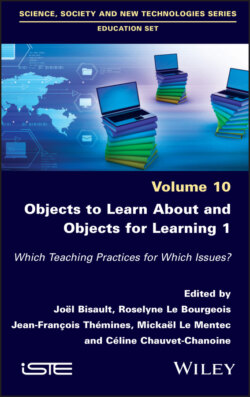Читать книгу Objects to Learn about and Objects for Learning 1 - Группа авторов - Страница 12
Part 2 of Volume 1 – Objects and Early Learning
ОглавлениеThere is one segment of education that cannot manage without objects for learning and to learn about: it is kindergarten, in which the ubiquity of objects of all kinds could be described as an invariant of this first school. In fact, as early as 1886, Pauline Kergomard, founder of this institution devoted to early learning, wrote:
In order to keep occupied, the child must have material objects at his or her disposal. The child who is barely walking pushes a chair in front of him/her for support; an older child turns his/her chair into an improvised horse; then there are the toys, real ones, from the rattle with bells on for the babe-in-arms, to the game of dominoes with which the eldest is learning to count to 12 […]. And it actually is an educational resource, since each of the objects of which it is composed is used for the physical and intellectual development of the child who has it within his/her reach5.
While it is incontestable that objects are plentiful in kindergarten and that they are used in early learning, their role often receives little attention or analysis from educators and researchers. The second part of this work, devoted to objects and early learning, sets out to shed some light on very diverse objects.
Certain objects, such as mascots, have become commonplace in kindergarten; they are supposed to help bring parents and teachers closer together in a collaborative vision of the parent–teacher relationship; it is precisely this supposed rapprochement that is investigated here in terms of social inequalities by Marie-Noëlle Dabestani (Chapter 6). Based on a survey of teachers in mainland France, this author shows a recurrent use of a notebook linked to a mascot and highlights an accentuated, attenuated or neutralized scansion between two spaces of socialization: the family and the school. Thus, the socializing practices of parents and teachers can either be coordinated and reinforced between the two spaces or, conversely, remain separate, the same object being understood differently by each of the stakeholders.
Posters, which are also objects positioned at the interface of materiality and symbolism, are widely used in kindergarten classrooms, generally with no consideration being given to their role in pupil learning and the difficulties they can pose from a didactic point of view. In Chapter 7, Elisabeth Mourot studies the way in which kindergarten pupils from contrasting social backgrounds construct the meaning of didactic posters. Based on interviews in which pupils are confronted with this kind of material, she puts forward configurations of social interpretative subjects, according to the pupils’ ability to symbolize and use language in its evolutionary function.
Conversely, other objects are found less often in kindergarten or elementary school classrooms, such as robots, but are worthy of attention in order to understand the use made of them by the pupils and the skills and knowledge they help to develop. Olivier Grugier and Sandra Nogry show in their testimony (Chapter 8) how elementary school pupils seize upon small robots (BeeBots) and manage to program instructions to generate their movements. Analysis of the sessions observed reveals the essential role of certain artifacts in teachers’ guidance. A comparison of three different class levels (pre-school, first grade and fourth grade) shows a learning progression in computer science and technology.
